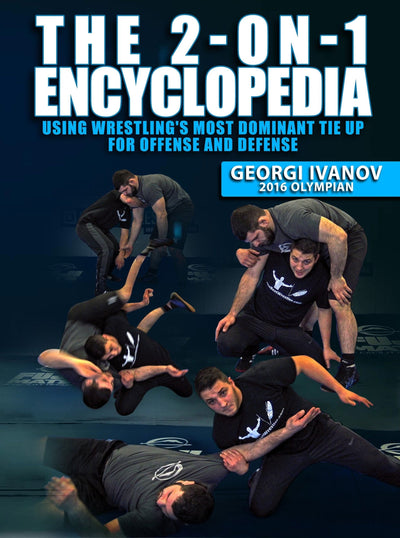The Perfect Pancake With Brandon Wright
The pancake is one of the most controlling positions in wrestling. With your opponent on their back and having control of their arm, it is very difficult to escape and often results in a pin. One of the most common ways to get to the pancake position is from a front headlock.
There are many different techniques for getting to pancake from the front headlock, however in developing your game it is important that you choose one to become extremely proficient in.
When trying to decide on the best technique for you, who better to take advice from than two-time NAIA Champion Brandon Wright. As a four-time state finalist at Indiana University, he took a coaching position at his alma mater following his graduation.
Brandon is a part of the US National Wrestling Team, and served as an assistant coach at Grand View during the 2016-17 season. Brandon earned a 58-8 record while wrestling at Grand View, and went undefeated in NAIA competition.
In this video, Brandon demonstrates a transition to pancake from a front headlock. Check it out below!
Brandon begins the demonstration with his partner in the front headlock position. The first thing he does is he switches the arm with the headlock into an underhook, grabbing his partner's shoulder. He uses his shoulder on the same side as the underhook to apply pressure and begin to drive forward into his partner. This makes it extremely difficult for his partner to address the underhook, as he needs to make sure to keep his base.
As he is driving, his partner is using his right arm as a post, which is carrying the pressure that Brandon is applying with his shoulder. From here Brandon tightens up the underhook by bringing his elbow in towards him. This is a crucial step because if he did not keep that elbow tight, it would create more of an opportunity for his partner to sit through and eliminate the possibility of getting to pancake. In addition to keeping the elbow tight, the shoulder pressure is also crucial to prevent his partner from sitting through.
Once the elbow is tight and the shoulder pressure is there, Brandon slides his hand down to the wrist on the hand his partner is posting on, and pulls it up eliminating his base. Once the post is gone, he is able to turn his hips towards his partner, flipping him over to the side he was posting on and effectively landing in the pancake position.
Brandon makes an important technical point to note once you have the posting wrist of your partner. He states that when you get here, it is likely that your opponent is going to circle out in the opposite direction to try and avoid getting swept. He reiterates the importance of keeping that wrist and arm extended, and moving back in to close the distance every time his partner tries to circle before going for the sweep. If you can take your time in doing this, making sure you are applying the correct pressure and being patient in waiting for the right timing, you are going to successfully get to pancake.
Any opponent you get in a front headlock is going to do whatever they can to get out. The first thing they will likely do is start to pull down on your elbow to try and get out. Obviously depending on varying strengths of your opponents this may or may not be effective against you, but if it is they are simply just giving you the underhook. It is at this point where you are going to either expend a ton of energy trying to keep that headlock, or you are going to be grateful that you watched Brandon’s instructional and remembered that the underhook is right there!
This instructional is very focused in chronological order from takedowns with the front headlock from the feet, to multiple finishing variations from front headlock from the knees, as well as front headlock defense. Some specifics you can expect to see include front headlock to pick and high crotch, front headlock drag and shuck, beating front head offense, and so much more.

If you find you have been getting to this position but struggling in finishing from there, want to work more on front headlock technique, or understand the value of learning from a Two-Time National Champion and Third Placer in US Team Trials such as Brandon Wright, then do yourself a favor and check out his instructional here!









